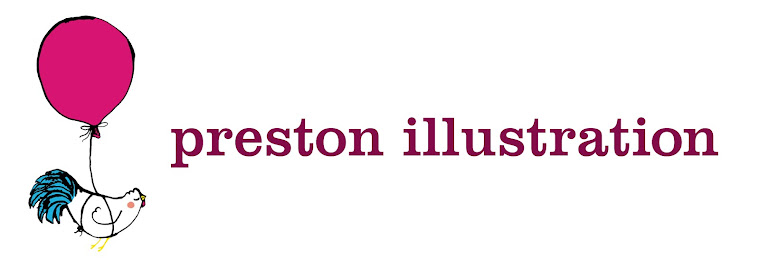The winners of this years newly reformatted AOI Illustration Awards "The Oscars of Illustration"! were announced a few weeks ago. There are several new categories from the old "Images" format reflecting the changing nature of illustration commissioning. Here are the professional category winners you can see the new talent winners on the website (click the title link) as well as the shortlisted works, including Ritwik Das as mentioned a few posts ago. The Category winners and a selection of awarded works will be exhibited at Somerset House in London from the 8th October and will travel to four venues across the UK including Blackpool & Fylde College.
PUBLIC REALM: Jane Reiseger
Title Wayfinding and interior graphics for the new Royal Children's Hospital, Melbourne, Australia
Use Illustrations were used for interior graphics and way-finding throughout the 8 levels of the hospital.
Commissioner Buro North for the Royal Children's Hospital, Melbourne

EDITORIAL: Edd Baldry
Title Scouse
Use Illustration for an interview with Tony Crowley, a cultural historian, on the changing accent in Liverpool.
Commissioner Red Pepper Magazine

BOOK: Merav Salomon
Title Frostbites
Use Poetry book written and illustrated by Merav Salomon
Commissioner Tollen Hefte

ADVERTISING: Lesley Barnes
Title Imagination
Use Poster for the V&A Museum of Childhood
Commissioner AMV BBDO
Client V&A Museum

CHILDREN'S BOOKS: Levi Pinfold
Title Black Dog
Use Picture Book
Publisher Templar Publishing

SELF-INITIATED: Anna Cattermole
Title Reportage of Traditional Wooden Boat Building
UsePersonal project leading to exhibition collaboration with National Maritime Museum
DESIGN: Jonathan Burton
Title Odd Bods
Use Special Edition Playing Cards
Commissioner Folio Society

KNOWLEDGE TRANSFER: Nicolle Fuller
Title Nanolipogel Attacking Cancer
Commissioner Yale University
Use:Visual showcase for recently published research to evoke interest from the non-science public and describe how nanotechnology might help combat cancer.

PUBLIC REALM: Jane Reiseger
Title Wayfinding and interior graphics for the new Royal Children's Hospital, Melbourne, Australia
Use Illustrations were used for interior graphics and way-finding throughout the 8 levels of the hospital.
Commissioner Buro North for the Royal Children's Hospital, Melbourne

EDITORIAL: Edd Baldry
Title Scouse
Use Illustration for an interview with Tony Crowley, a cultural historian, on the changing accent in Liverpool.
Commissioner Red Pepper Magazine

BOOK: Merav Salomon
Title Frostbites
Use Poetry book written and illustrated by Merav Salomon
Commissioner Tollen Hefte

ADVERTISING: Lesley Barnes
Title Imagination
Use Poster for the V&A Museum of Childhood
Commissioner AMV BBDO
Client V&A Museum

CHILDREN'S BOOKS: Levi Pinfold
Title Black Dog
Use Picture Book
Publisher Templar Publishing

SELF-INITIATED: Anna Cattermole
Title Reportage of Traditional Wooden Boat Building
UsePersonal project leading to exhibition collaboration with National Maritime Museum
DESIGN: Jonathan Burton
Title Odd Bods
Use Special Edition Playing Cards
Commissioner Folio Society

KNOWLEDGE TRANSFER: Nicolle Fuller
Title Nanolipogel Attacking Cancer
Commissioner Yale University
Use:Visual showcase for recently published research to evoke interest from the non-science public and describe how nanotechnology might help combat cancer.








